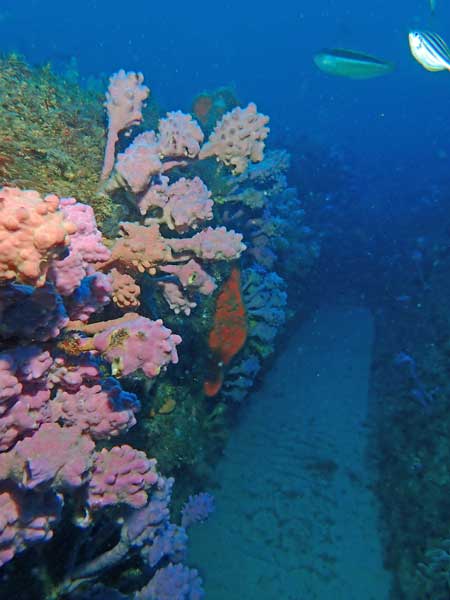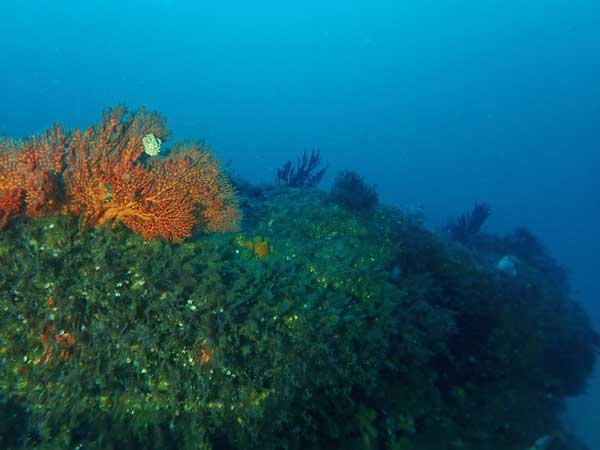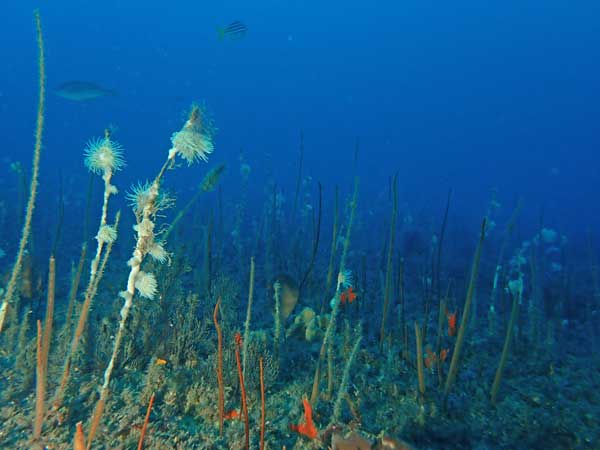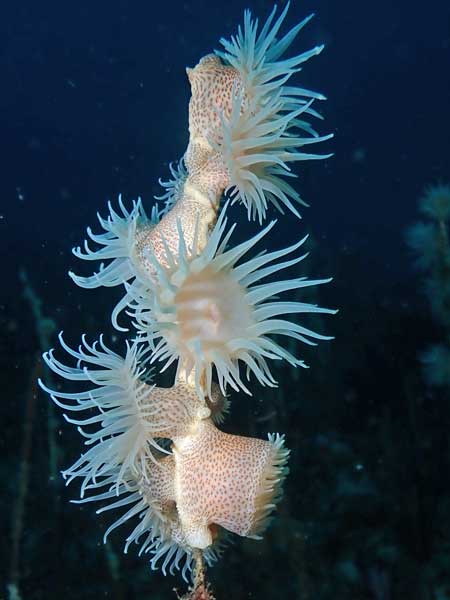|
Michael McFadyen's Scuba Diving - Middle Ground North
The southern side of Sydney has literally dozens of dive sites, so many that even we do not dive them all. As there is now no dive charter boat that dives out of Port Hacking, the only way you can visit these sites is with a private boat. Our dive club, St George Scuba Club, does most of its diving south of Botany Bay.
One of the spots that we dive is called Middle Ground. This is located straight out of Port Hacking, in a direct line with Oak Park. In the early 1990s my friends and I started diving this spot, having noticed its location on a new Department of Public Works and Services seabed chart. Les Caterson, who used to own half of my boat, remembered diving it way back and we reffound it without too much trouble. Les, who had been diving the coastline off Royal National Park since the 1950s, tells me that he used to dive this site but over the years people stopped visiting it.
Anyway, the main local dive operator then, Max Western in Seatamer II, started diving the site after we refound it. However, after a while he used to dive a bit to the north-east of the site we preferred. I dived it a few times with him and also in our boat, but I doubt that I had dived it much since about 1995.
 |  |
| One of the thousands of tiger anemones | A gorgonia on the western wall |
Over the years after 2010 we talked about refinding that reef, so on 18 February 2015, we decided to have a go. We headed north-east from the Middle Ground GPS spot and 130 metres later we found the reef. A bit of running around found the best spot to anchor so we hooked up. The GPS is 34ΒΊ 04.301'S 151ΒΊ 11.526'E using WGS84 as a datum. The bottom rises from 31 or 32 metres to about 28 to 29 metres. The reef runs from the north-west to the south-east. Note that the reef is not very big, so you may need to drop your anchor on the sand and hang back in the wind/current onto the reef.
As mentioned, the reef runs north-west to south-east, so once on the bottom, if you cannot see the edge of the reef, head at right-angles to this direction and you should find the edge within 20 metres. The best wall is on the eastern side of the reef and especially at the northern end. From the GPS spot, follow the reef to the north (assuming you are now on the eastern side). The wall is two to three metres high and there are some small overhangs all along it. There is a sort of inlet near the northern end and then a couple of larger boulders on the reef top.
 |  |
| Sea tulips on the wall of one of the small gutters | Another gorgonia on the western wall |
Go to the north and then around the top and come back along the western side. The wall here is much lower, but there are still some small overhangs. The reef top has lots of sea tulips and sponges all over the place. There are also plenty of gorgonias, probably more than I have ever seen off a southern Sydney dive site.
The reef top is covered in sea whips, most of which have resident tiger anemones. Some have up to half a dozen. This is one of the few spots in Sydney where you can see them.
 |  |
| The reef top covered in sea whips and tiger anemones | Some more tiger anemones on a sea whip |
Follow the western edge towards the south-east. You might see eastern blue devilfish and pineapplefish here. After about 50 metres the reef lowers a bit and there is also a bit more reef off over the sand. You will see a large crack that runs to the north. Follow this and you will come to the eastern side of the reef after about 25 metres.
As well as the sea whips and tiger anemones, this site is normally covered with huge numbers of yellowtail and sometimes seapike. In February 2025 we had silver sweep, small leatherjackets and red morwong mixed in with the large schools. We have also seen quite a few kingfish circling us. Visibility can be very good here, on the dive in 2025 we had at least 12 metres.
Since 2015 we have started diving the site a bit more, including twice in a week in 2025. It has always been good.
| 
 v6.00.307 © 2003-2005
v6.00.307 © 2003-2005